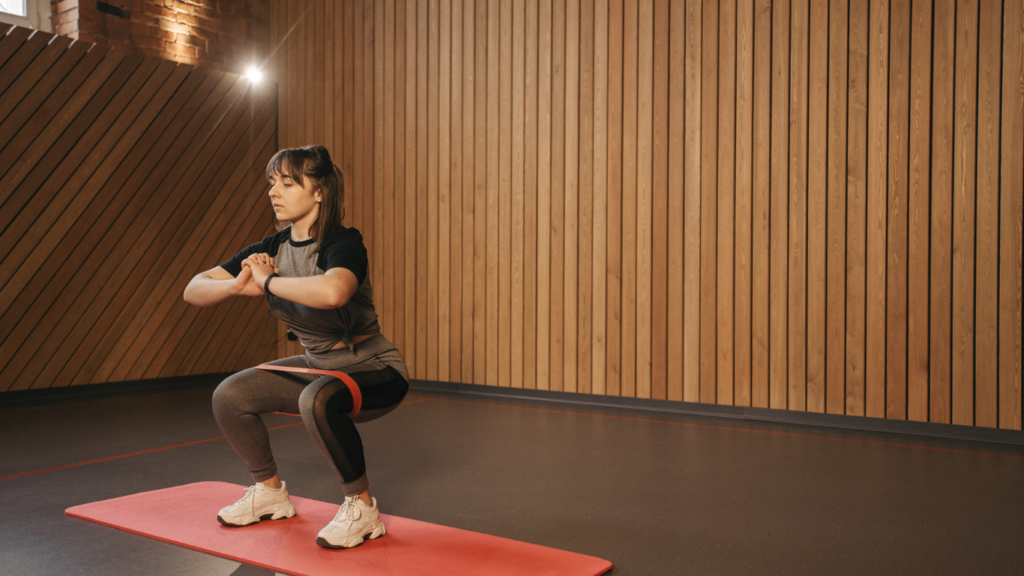Looking to level up your fitness routine? I’ve got you covered with an effective full-body workout solution – resistance bands. These versatile tools are a game-changer for anyone looking to add variety and challenge to their workouts.
In this article, I’ll walk you through the ins and outs of using resistance bands to target every muscle group for a comprehensive workout experience. With resistance bands, you can sculpt and strengthen your entire body, from your arms and shoulders to your legs and core, all with one simple piece of equipment.
Whether you’re a beginner or a seasoned fitness enthusiast, incorporating resistance bands into your routine can help you achieve your fitness goals more efficiently. Get ready to amp up your workout and feel the burn in all the right places with these expert tips on maximizing the benefits of resistance bands for a full-body workout.
Benefits of Resistance Bands for Full-Body Workouts
Using resistance bands for full-body workouts offers numerous advantages that can enhance your fitness routine.
- Versatility: Resistance bands are incredibly versatile and can target multiple muscle groups in various ways.
- Portability: They are lightweight and compact, making them easy to carry anywhere, allowing you to stay consistent with your workouts even on the go.
- Adjustability: With different levels of resistance available, you can easily adjust the intensity of your workout by choosing the appropriate band.
- Joint-Friendly: Resistance bands provide a low-impact way to strengthen muscles and improve flexibility without putting too much strain on your joints.
- Cost-Effective: Compared to traditional gym equipment, resistance bands are relatively affordable and offer a cost-effective way to achieve a full-body workout.
- Suitable for All Fitness Levels: Whether you are a beginner or an experienced fitness enthusiast, resistance bands can be tailored to suit your fitness level and goals.
Choosing the Right Resistance Bands
When selecting the appropriate resistance bands for your full-body workout, consider factors such as your fitness level, the type of exercises you plan to do, and your strength goals. Assessing these aspects will help you choose the right resistance level and band type for optimal results.
- Fitness Level: Assess your current fitness level to determine the resistance level that suits you best. Beginners may start with lighter bands, while intermediate or advanced users may need bands with higher resistance to provide ample challenge.
- Exercise Types: Different exercises require varying levels of resistance. For instance, exercises targeting larger muscle groups like legs and back may require heavier bands, while smaller muscle groups like shoulders and arms may need lighter resistance bands.
- Strength Goals: Define your strength objectives to align them with the resistance bands you select. Whether you aim to build muscle, improve endurance, or enhance flexibility, choosing bands that cater to your goals is essential for effective workouts.
- Band Types: Resistance bands come in different types such as loop bands, tube bands, and therapy bands. Each type offers unique advantages for specific exercises and muscle engagement. Understanding the differences can help you pick the most suitable option for your workout routine.
By considering these factors, you can narrow down your choices and pick the right resistance bands that align with your fitness level, exercise preferences, and strength targets. Ensuring the correct selection will optimize your full-body workout routine and maximize the benefits of using resistance bands.
Key Exercises for a Full-Body Workout
I’ll outline essential exercises to target major muscle groups effectively using resistance bands. Incorporating these moves into your routine can help you achieve a comprehensive full-body workout.
Upper Body Exercises
Engage your upper body muscles with the following resistance band exercises:
- Banded Push-Ups: Place the resistance band across your back during push-ups to increase resistance and build upper body strength.
- Banded Rows: Anchor the resistance band to a sturdy object and perform rows to target your back muscles effectively.
- Shoulder Press: Hold the resistance band overhead and press up, engaging your shoulder and arm muscles.
- Bicep Curls: Step on the resistance band and perform bicep curls to strengthen your arm muscles.
Lower Body Exercises
Target your lower body muscles with these resistance band exercises:
- Squats: Place the resistance band under your feet and across your shoulders while performing squats to add resistance and intensity.
- Glute Bridges: Loop the resistance band around your thighs and perform glute bridges to strengthen your glutes and hamstrings.
- Lateral Leg Raises: Secure the resistance band around your ankles and perform lateral leg raises to work on your outer thigh and hip muscles.
Core Exercises
Strengthen your core muscles with these resistance band exercises:
- Pallof Press: Stand sideways from the anchor point, holding the resistance band at chest height, and press outward to engage your core in a twist.
- Russian Twists: Sit on the floor with legs elevated, holding the resistance band and twisting your torso from side to side to work on your obliques.
- Plank with Leg Lifts: Place the resistance band around your ankles and get into a plank position, then lift one leg at a time to engage your core and glutes.
Incorporate these key resistance band exercises into your workout routine to target all major muscle groups effectively and achieve a balanced full-body workout.
Sample Full-Body Resistance Band Workout Routine
In this sample resistance band workout routine, I’ll outline a series of exercises that target various muscle groups to provide you with a comprehensive full-body workout.
Remember, proper form and controlled movements are key to maximizing the benefits of using resistance bands.
Upper Body:
- Banded Push-Ups: Perform 3 sets of 12 reps. Place the resistance band around your back and hold it firmly in each hand while doing push-ups for added resistance.
- Banded Rows: Do 3 sets of 15 reps. Sit on the floor with your legs extended, loop the band around your feet, and pull the bands towards your chest, engaging your back muscles.
- Shoulder Presses: Complete 3 sets of 12 reps. Stand on the center of the resistance band, holding the ends at shoulder height, then press upward to work your shoulder muscles.
- Bicep Curls: Aim for 3 sets of 15 reps. Step on the resistance band with both feet, hold the ends with your hands, and curl upwards to target your biceps effectively.
Lower Body:
- Squats: Perform 4 sets of 15 reps. Stand on the resistance band with your feet hip-width apart and hold the band at shoulder level while squatting down for resistance.
- Glute Bridges: Do 3 sets of 20 reps. Lie on your back with the resistance band above your knees, lift your hips towards the ceiling, squeezing your glutes at the top.
- Lateral Leg Raises: Complete 3 sets of 12 reps per side. Attach the band to a sturdy object and loop it around one ankle, then raise your leg out to the side against the resistance.
- Pallof Press: Aim for 3 sets of 12 reps per side. Attach the band to a stationary object at chest height, hold the band with both hands, and press outward to engage your core.
- Russian Twists: Do 3 sets of 20 reps (10 per side). Sit on the floor, legs elevated or on the ground, hold the band with both hands, and rotate your torso from side to side.
- Planks with Leg Lifts: Perform 3 sets of 30-second holds. Get into a plank position with the band around your ankles, then lift one leg at a time while maintaining a stable core.
Incorporate these exercises into your regular workout routine for a challenging full-body workout using resistance bands. Adjust the resistance levels as needed and focus on proper form to achieve the best results.
Tips for Maximizing Your Resistance Bands Workout
When it comes to optimizing your resistance bands workout, consistency is key. I recommend incorporating these expert tips to make the most out of your training sessions:
- Vary Your Grips: To target different muscle groups effectively, switch up your grip positions while using resistance bands. For instance, you can try an overhand grip for rows and an underhand grip for bicep curls to engage and challenge your muscles in new ways.
- Focus on Eccentric Movements: Slow down the lowering phase of each exercise to emphasize the eccentric contraction of your muscles. This technique not only increases muscle activation but also promotes muscle growth and strength development over time.
- Incorporate Isometric Holds: Integrate isometric holds into your resistance bands routine by pausing and holding positions at the peak of contraction during exercises like squats or chest presses. These static holds help improve muscle endurance and enhance overall stability.
- Control the Resistance: Maintain consistent tension throughout each movement to ensure you’re working against the resistance provided by the band. Avoid rushing through exercises and focus on controlled contractions to maximize the effectiveness of your workout.
- Combine Cardio with Resistance Training: Enhance your workout by incorporating cardiovascular exercises between resistance band sets. Jumping jacks, high knees, or mountain climbers can boost your heart rate while still engaging your muscles, creating a more dynamic and challenging workout session.
- Stay Mindful of Form: Pay close attention to your form and posture during resistance band exercises. Proper alignment not only reduces the risk of injuries but also ensures that you’re targeting the intended muscles efficiently. Engage your core, keep your back straight, and move through a full range of motion for optimal results.
- Adjust Resistance Levels Gradually: As your strength and endurance improve, gradually increase the resistance levels of your bands to continue challenging your muscles. This progressive overload is essential for ongoing muscle growth and performance enhancement.
By implementing these tips into your resistance bands workout routine, you can elevate your training experience, achieve better results, and effectively target various muscle groups for a full-body workout that yields impressive fitness gains.


 Margie Barron brought her expertise in health communication to the development of Toe Back Fitness, ensuring that the platform delivers practical, easy-to-understand fitness advice. With a focus on making wellness accessible to everyone, Barron curated content that promotes healthy habits and sustainable routines. Her attention to detail and passion for empowering users through informative articles have been instrumental in shaping the platform’s voice and relevance.
Margie Barron brought her expertise in health communication to the development of Toe Back Fitness, ensuring that the platform delivers practical, easy-to-understand fitness advice. With a focus on making wellness accessible to everyone, Barron curated content that promotes healthy habits and sustainable routines. Her attention to detail and passion for empowering users through informative articles have been instrumental in shaping the platform’s voice and relevance.